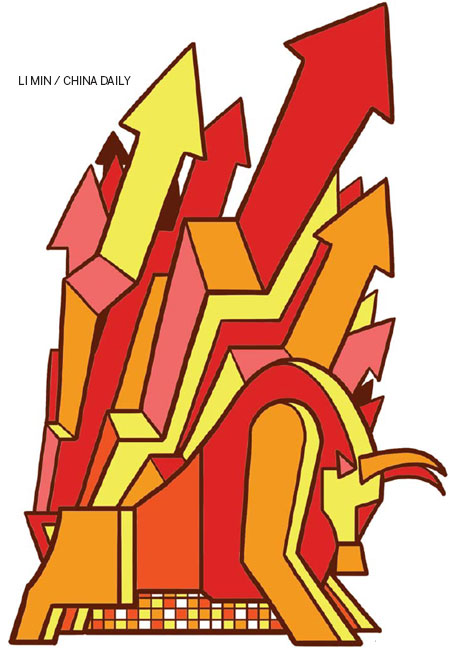How an international board will free up China's stock market
By Li-Gang Liu (China Daily) Updated: 2013-01-07 14:51

Bourses headed for better times as economic confidence improves
After a roller-coaster year, China's equity market closed with cautious optimism not seen since 2007.
The Shanghai Composite Index had a small gain with year-to-date return of 3.17 percent (as of Dec 31). This is a considerable improvement since the market slipped in late November when the index stood at less than one-third of an index peak of 6124 in October 2007.
The recent performance, however, still compares rather poorly with market indexes from important economies in the world. The S&P index, the FTSE, Nikkei, and Hong Kong's Hang Seng indexes all ended the year with a strong year-to-date return in spite of lackluster overall economic performances.
Though China's recent performance doesn't stack up to its standards from previous years, its macroeconomic performance remains robust relative to emerging market peers as well as major advanced economies such as the United States, the European Union and Japan. The contrast between China's GDP growth and its stock market returns raises questions as to why China's share market is not a reflection of its economic fundamentals.
China's stock market performance has shown little relevance to its economic performance over the last two decades. From 1992, when the stock market was first established in Shenzhen, until 2012, China has grown at an annual rate of around 10 percent, but its stock market performance has been extremely volatile. The stock market has been affected little by the country's long-term growth potential and more by its regulatory policies, the lack of forceful enforcement of securities laws and regulations, as well as the vicissitudes of short-term macroeconomic policies.
One of the main objectives of China's stock market in the early 1990s was intended to help promote reforms in state-owned enterprises and reduce their debt. Through incorporation, the government could help enhance the governance of SOEs. By relinquishing a portion of ownership, the State could secure necessary funding, mostly from the retail investors, to mitigate the debt burden of SOEs.
Though it has helped to relieve the debt of small- and medium-sized SOEs and played an important role in helping to revitalize China's SOEs, it has also created important institutional impediments that may have prevented the market from becoming a market for investors to generate long-term wealth.
For example, a requirement that SOEs must allow less than 20 percent of its shares to be listed suggests that the majority of the shares are still within State hands. Listed firms can thus decide how much to pay out as investors' dividends. In most cases, dividends are not paid out.
The lack of institutional investors also makes the dividend policy even less likely to be enforced. With little investor protection and selective enforcement of securities laws and regulations, China's stock market has become a haven for speculators rather than a place for long-term investment. Some say the Chinese stock market is worse than a casino.
Other than these institutional shortcomings, alternative channels of investment have opened up for Chinese property investors. These investors have made the stock market a more attractive place to invest their savings.
The private property market has taken off after the late 1990s. If one were to invest 100 yuan ($16; 12 euros) in China's property market in 2000, the average return by 2012 would have been at around 285 percent. The same amount of money invested in a bank would have yielded a return of 139 percent, while the same amount of money invested in the stock market would have yielded 135 percent.
As such, the Chinese stock market has offered the lowest returns for Chinese investors over a long period of time.
- China's outbound tourism spending tops $226b, half on shopping
- China-ASEAN Expo to be held in September in south China
- China's duty-free shop launches soft opening of 3rd outlet in Cambodia
- Anti-globalization sentiment likely to feed into G20 discussions: Italian expert
- China's home price growth moderates in July
- China Unicom's net profit plunges 80%
- Australia warned over grid deal block
- ODI, service trade numbers salvage lackluster foreign


















